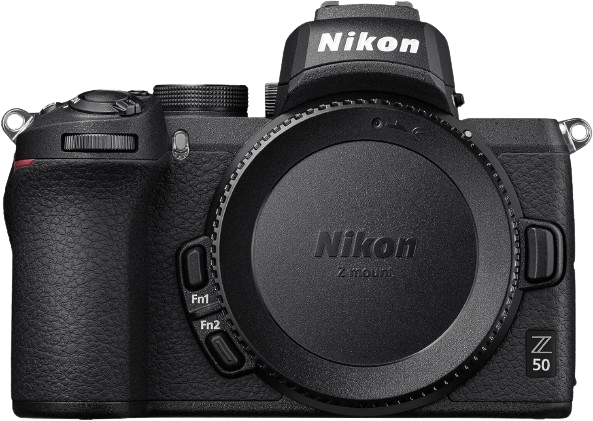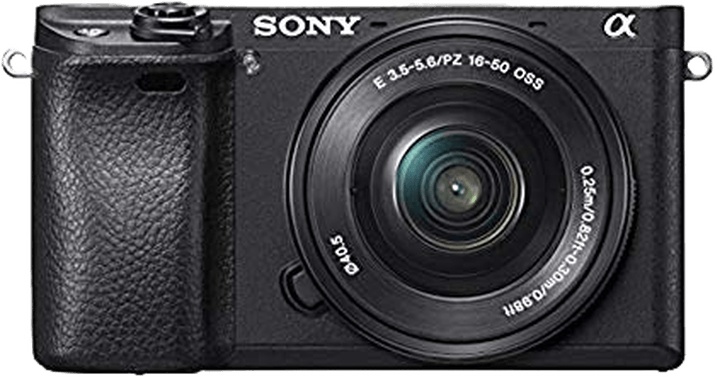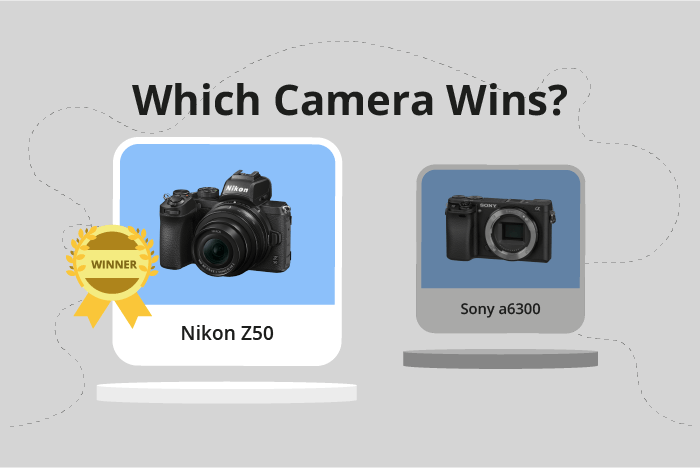Nikon Z50 vs Sony a6300 Comparison
Nikon Z50

Sony a6300

The Nikon Z50 outperforms the Sony a6300 with a score of 73/100 compared to 61/100. Both cameras are mirrorless and were released in 2019 and 2016, respectively. They share similarities in camera type and launch prices, with the Z50 at $859 and the a6300 at $1000.
The Z50’s higher score highlights its advantages, such as a larger camera size (127 x 94 x 60mm) and slightly heavier weight (450g) than the a6300 (120 x 67 x 49mm and 404g). This might contribute to better ergonomics and handling for some users.
However, the Sony a6300 has its merits, being smaller and lighter, which can be beneficial for those prioritizing portability. Despite the lower score, it remains a viable option for certain photographers.
Taking these factors into account, the Nikon Z50 is the better option for users valuing ergonomics and handling, while the Sony a6300 caters to those seeking a more compact and lightweight camera.
Nikon Z50 vs Sony a6300 Overview and Optics
The Nikon Z50 outperforms the Sony a6300 in optics, scoring 72/100 compared to Sony’s 68/100. Both cameras share several specifications, such as 11 fps shooting speed, CMOS sensor type, APS-C sensor size, and the absence of image stabilization. However, the Nikon Z50 has certain advantages that contribute to its higher score.
One of the main differences between the two cameras is their respective processors. The Nikon Z50 uses the Expeed 6 processor, while the Sony a6300 relies on the Bionz X processor. The Expeed 6 processor in the Nikon Z50 provides better image quality and faster processing speeds. Additionally, the Nikon Z50 has a higher DXOMARK sensor score of 97, compared to the Sony a6300’s score of 85, indicating superior sensor performance.
On the other hand, the Sony a6300 has a slightly higher megapixel count at 24.2, compared to the Nikon Z50’s 21 megapixels. This difference allows the Sony a6300 to capture more details in images, but it does not outweigh the advantages offered by the Nikon Z50.
Regarding lens mounts, the Nikon Z50 uses the Nikon Z mount, while the Sony a6300 uses the Sony E mount. Both mounts offer a wide range of lens options, allowing photographers to choose the best lens for their needs. This aspect does not provide a clear winner between the two cameras.
In the end, the Nikon Z50 surpasses the Sony a6300 in terms of optics, mainly due to its superior processor and sensor performance. While the Sony a6300 has a slightly higher megapixel count, it does not make up for the Nikon Z50’s overall better optical performance.
Nikon Z50 vs Sony a6300 Video Performance
The Nikon Z50 and Sony a6300 both have a video score of 91/100, indicating a tie in their video capabilities. They share several video specifications, including a maximum video resolution of 4K, maximum video dimensions of 3840 x 2160, a maximum video frame rate of 120fps, and built-in time-lapse functionality.
The Nikon Z50 excels in user-friendliness, with its intuitive menu system and ergonomic design, making it easier for users to navigate through the video settings. It also has a flip-down touchscreen, which is helpful for vlogging and recording at various angles. This feature gives the Z50 an advantage for those who prioritize ease of use and flexibility in their video shooting.
On the other hand, the Sony a6300 has a slight edge in terms of autofocus performance, thanks to its 425 phase-detection autofocus points. This ensures quick and accurate focusing while recording videos, especially in fast-paced situations. This makes the a6300 a better choice for those who require superior autofocus capabilities in their video work.
Both cameras offer impressive video performance, with each having its advantages. The Nikon Z50 is more user-friendly and versatile, with its flip-down touchscreen and ergonomic design, while the Sony a6300 has superior autofocus capabilities. Ultimately, the choice between the two cameras depends on the user’s specific needs and preferences in video recording.
Nikon Z50 vs Sony a6300 Features and Benefits
The Nikon Z50 outperforms the Sony a6300 in features, scoring 86/100 compared to the Sony a6300’s 54/100. Both cameras share some common specifications, such as the absence of GPS, the presence of WiFi, and flip screens. However, the Nikon Z50 surpasses the Sony a6300 in several areas, making it the better camera in terms of features.
The Nikon Z50 has a larger screen size of 3.2 inches compared to the Sony a6300’s 3-inch screen. This difference allows for a more comfortable viewing experience when composing or reviewing images. Additionally, the Z50 has a higher screen resolution of 1,040,000 dots, providing a clearer and more detailed image than the a6300’s 921,600 dots. The Z50 also features a touchscreen, making navigation and controls more intuitive and user-friendly.
In terms of connectivity, the Nikon Z50 has an advantage with its built-in Bluetooth feature. This allows for seamless and convenient connections to other devices, such as smartphones, for easy sharing and remote control capabilities. The Sony a6300 lacks this feature.
Despite its lower feature score, the Sony a6300 still holds its own with its flip screen and WiFi capabilities. However, it falls short in comparison to the Nikon Z50 in screen size, resolution, and connectivity options.
Taking all these factors into account, the Nikon Z50 stands out as the superior camera in terms of features. Its larger, higher-resolution touchscreen and Bluetooth connectivity give it an edge over the Sony a6300, making it the clear winner in this comparison.
Nikon Z50 vs Sony a6300 Storage and Battery
The Nikon Z50 outperforms the Sony a6300 in storage and battery, scoring 35 out of 100 points compared to the Sony a6300’s 24 points. Both cameras share some common specifications, such as having one memory card slot and accepting SD, SDHC, and SDXC memory cards. However, there are differences that make the Nikon Z50 superior in this aspect.
The Nikon Z50 is equipped with a battery life of 320 shots, powered by an EN-EL25 battery. Additionally, the camera allows USB charging, making it more convenient for users to charge their device. On the other hand, the Sony a6300 has a slightly longer battery life of 400 shots, using an NP-FW50 battery. However, it lacks USB charging capabilities, which can be a disadvantage for users who prefer charging their camera through a USB connection.
In terms of storage and battery, the Nikon Z50 is the better choice due to its USB charging feature. Despite having a shorter battery life compared to the Sony a6300, the convenience of USB charging outweighs this minor drawback. The Sony a6300’s advantage in battery life is not significant enough to compensate for its lack of USB charging.
Nikon Z50 vs Sony a6300 – Our Verdict
Are you still undecided about which camera is right for you? Have a look at these popular comparisons that feature the Nikon Z50 or the Sony a6300:

